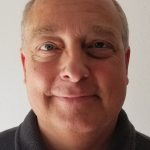By Eric A. Brandser, MD
Job stress is a hot topic, and I would like to share how my group worked as a team toward reducing it. Burnout tends to be a workplace, rather than an individual issue; however, it is felt at the individual level.
Although it may be decreasing, many of us have some control over our job environment. If you work in a group in which you can set your own workday, then group actions are more effective than individual ones for burnout reduction.
We are a 30-person radiology group in northern Kentucky (Cincinnati area) among which reading speeds vary. Everyone is a worthwhile team member, but not just because they are blisteringly fast at reading studies.
We struggled for years with “slow mix” days, where there were more of our slower readers on the schedule than the incoming workload required, or the IR caseload kept our interventional radiologists from helping with the main reading list. We had frequent epidemics of “long list anxiety syndrome (LLAS).” We found it demoralizing to get to the end of the day only to have the toughest cases left on the list. Long days, frustration, and resentment were common.
In looking at the path of productivity measurement, we realized that slower readers are not that way by choice; they work as fast as they can. I have almost never seen a person dramatically increase his or her top reading speed when measured, and on those occasions where there was a big change, I saw underlying sloth rather than a change in personality. Fortunately, our group has little of that issue.
One solution came when our group instituted a “bunker” shift in the middle of the day. This is a paid and voluntary shift open to anyone in the group. The shift is work output-related, rather than task coverage- or time-related. Forty work relative value units (wRVU) need to be done to be given credit (payment) for the shift, which was set up to be as long needed to meet the metric, not for a fixed number of hours. We have that person start at 11 a.m., when the daily inflow of studies really takes off. In the old days, the LLAS would infect our reading rooms.
The pay rate was set at roughly half of a regular day’s work. The number 40 was chosen as a number 20 percent higher than a typical half day, given that there should be fewer interruptions. Note that this is the only shift where we daily measure wRVU output. We found that the stress of daily productivity measurement was terrible for our group, guaranteeing anxiety borne mostly by my slower, quieter colleagues. I feel that deliberate induction of anxiety is a cruel way to behave, particularly if you own the company where you work.
The shift is typically done away from the main hospital settings, as getting called away for important consults, special procedures, or other “valuable” activities for the group were specifically not part of the bunker shift description and being in the hospital increased the chance one would be asked to help in that manner. The faster readers gravitated to this shift, and when they were covering, they took the toughest cases off the list.
The effect of this bunker shift has been incredible. The number of “tough” days dropped by more than 85 percent. More importantly, the daily LLAS effect has been almost mitigated.
The group then looked at better scheduling throughout the day and on weekends, shifting radiologist coverage to early evenings, when a large number of outpatient studies seem to arrive. We added bunkers to the Saturday and Sunday coverage schedule, and added overlap with our overnight reader at the beginning of the shift, when the E.D. tends to be very busy.
Personally, I have approached burnout with acceptance and surrender, but not in the way you might think. I am in my last 10 years of working full time and have already tilted at many windmills. I started working on succession planning for my section of our group and for the group as a whole as we are top heavy, with 30 percent nearing retirement. I found that becoming a mentor and letting go of the steering wheel was a freeing experience. My younger partners are doing a great job taking our company to the next level of greatness, and I am happy to let them do that.

 Eric A. Brandser, MD, is a musculoskeletal and emergency radiologist in the Cincinnati area, with interests in computer architecture, image perception, and network topology/security. He also owns a small PACS and teleradiology company and can be reached at eabrandser@radnky.com.
Eric A. Brandser, MD, is a musculoskeletal and emergency radiologist in the Cincinnati area, with interests in computer architecture, image perception, and network topology/security. He also owns a small PACS and teleradiology company and can be reached at eabrandser@radnky.com.

 Eric A. Brandser, MD, is a musculoskeletal and emergency radiologist in the Cincinnati area, with interests in computer architecture, image perception, and network topology/security. He also owns a small PACS and teleradiology company and can be reached at eabrandser@radnky.com.
Eric A. Brandser, MD, is a musculoskeletal and emergency radiologist in the Cincinnati area, with interests in computer architecture, image perception, and network topology/security. He also owns a small PACS and teleradiology company and can be reached at eabrandser@radnky.com.Help spread the word


